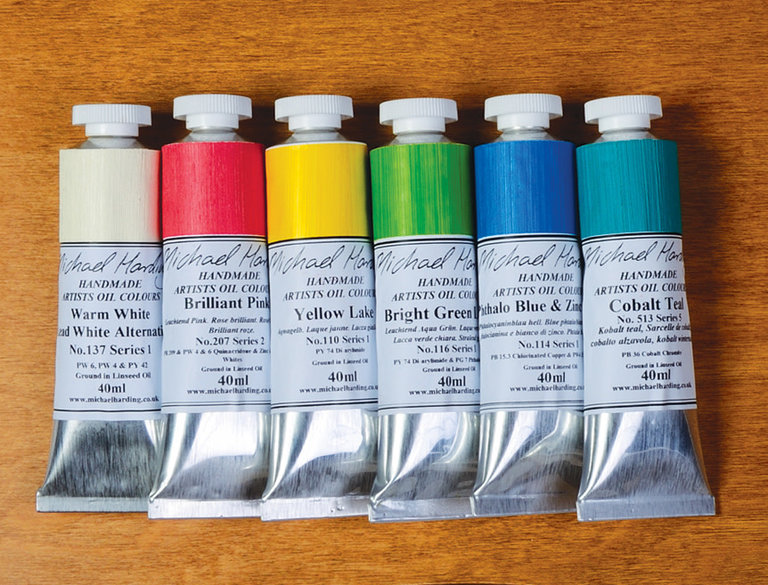



Login
Log in if you have an account
Register
By creating an account with our store, you will be able to move through the checkout process faster, store multiple addresses, view and track your orders in your account, and more.
Create an accountDownload Michael Harding Paint Colours and Materials Brochure
The Michael Harding Oil Paint range contains the finest of the finest pigments, ground in refined cold-pressed linseed oil. Luminous, brilliant colours at very high tint strengths, they are totally free of fillers, extenders or driers, with a texture that’s silky rather than oily.
Details and Descriptions of Colours
The individual colour descriptions provide assessments for certain determinable characteristics of all the colours presently in the Michael Harding Artist Oil Colours range as well as a few informal remarks by Michael on their qualities and idiosyncrasies when used.
The Colour Index Number:
This is the international system for classifying and identifying pigments by their (some times complex) chemical formulae (e.g. P(igment) R(ed) is expressed as Pr 106, Mercuric Sulphide known as Genuine Vermilion). The use of vague traditional or invented colour names is thus clarified and so in theory at least is the vexed matter of what pigment manufacturers actually put into their paints. If a colourman is honest, each constituent pigment in a paint can be specified precisely, and the practice of secretly adulterating or even completely substituting cheaper alternatives is made impossible. Assuming, that is, the colourman is honest . . . I can certainly state that there are no secret additions to any of the paints in my range. What you read as the C.I. number on the label is what you get.
Estimated Drying Speed:
Keep in mind that all drying speeds are affected by: temperature, humidity and light levels. The aforementioned conditions provide for a broad calibration of comparative speeds from: Very Fast, such as the Umbers, many of which if used neat (unmixed with other colours), will be touch dry within a warm summer day, to the Very Slow, which in an unmixed state, might take up to a week to cure. This is governed by how thickness of the paint layer. Please remember the thicker the layer the longer it will take to cure.
Lightfastness:
This gives some indication of the resistance of a pigment to fading when exposed to very high light levels. Though the commonly used numerical system for this is the scale devised by the American Society of Testing and Manufactures (ASTM I-V), in practice the fade resistance of pigments is greatly affected by their concentration, or lack of it, in paint mixes. Thus an excellent lightfast pigment (ASTM I), if dispersed in a paint by the addition of fillers will in consequence show increased tendency to fade. As I have said before, there are no fillers added to the pigments in my oil paint range.
Tint Power and Transparency:
This characterizes the ability of a given paint to cover over the substrate onto which it is painted. Cadmiums are the most opaque and Indian Yellows are the least opaque. Transparency should not be confused with sheer strength of colour or Tint Power as it is revealed in mixes. Some transparent paints, e.g. the Phthalo Lakes, are ferociously strong when mixed with sturdily opaque hues.
Oil Content:
This indicates broadly how much oil has to be ground in with the dry pigment or the lake dye in order to make it into a workable paint. Paint with high oil content will generally, but with exceptions, dry to a glossier surface and that with low oil content will be leaner and tends to be less glossy.
Add your review
Review Michael Harding Oil Paints Series 4

